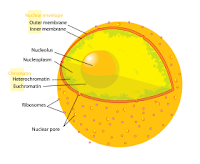As I noticed on the concentration part the more drops of yeast you put in the test tube the faster the reaction would occur, the more pressure it had. In the temperature we tested hot, cold and room. The enzymes wouldn't produce much pressure in the cold test tube. Enzymes don't like the cold. Its kinda like when your sick. The hotter the test tube got the more enzymes being produced, enzymes like the temperature to be hotter than cold. The last testing we did was the Ph of each testing. The pink buffer had a Ph of 4, the yellow had a Ph of 7, and the blue buffer had a Ph of 10. In our results the high the Ph the higher about of pressure and enzymes.
This lab was very interesting. We tested three different types of environments that enzymes would react in. Each lab was very different. We tested concentration, the temperature, and the Ph. Each result was different as you can tell from the three graphs below.
This is our temperature graph, as you can tell enzymes work better when its hotter.
This is our Ph level one, the high the ph the faster enzymes work. The ph 4 and ph 7 are very close to each other. But the ph 10 was way higher than ph 4 and ph 7.
This was the test we did with just peroxide and water. We noticed the more yeast you put the more enzymes would react.



















